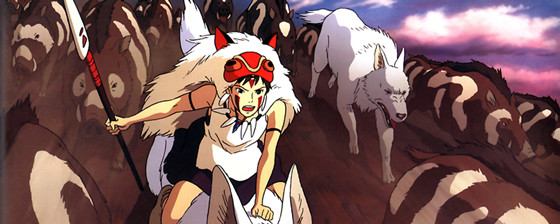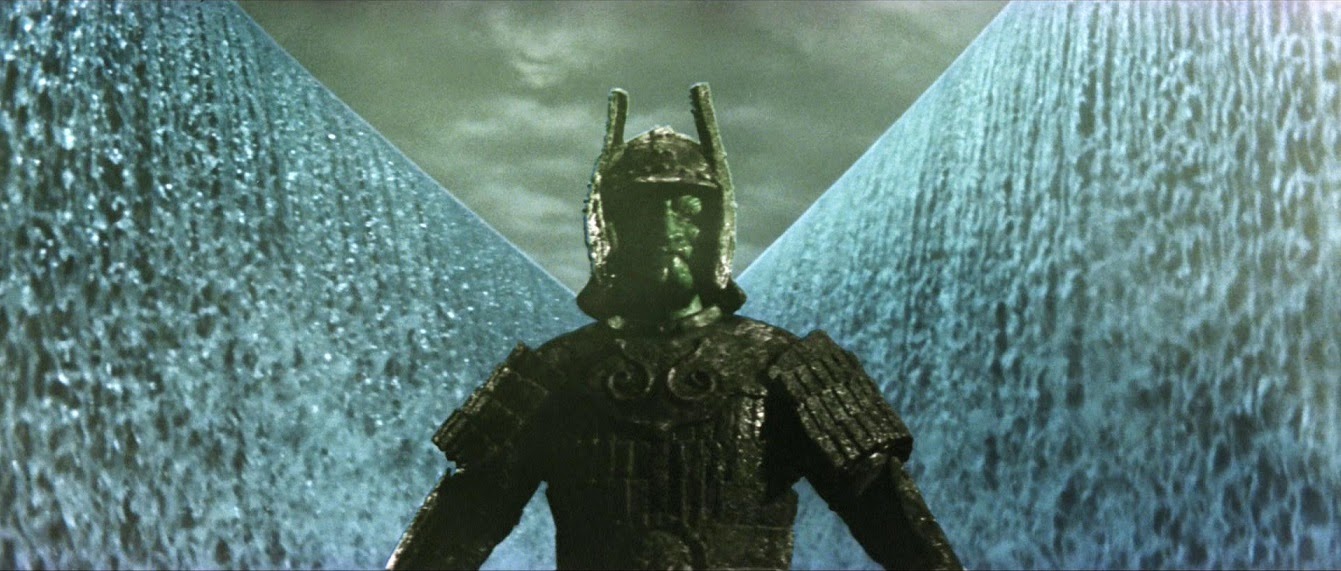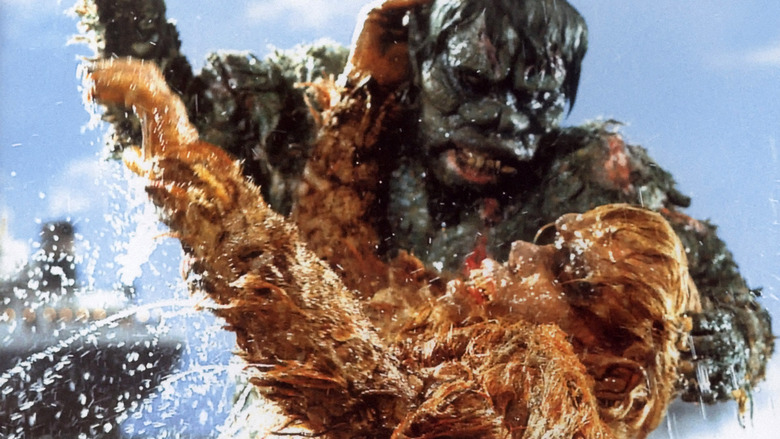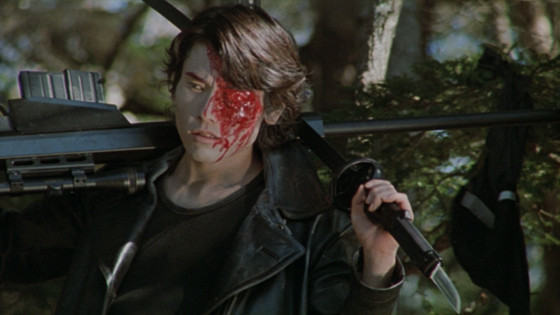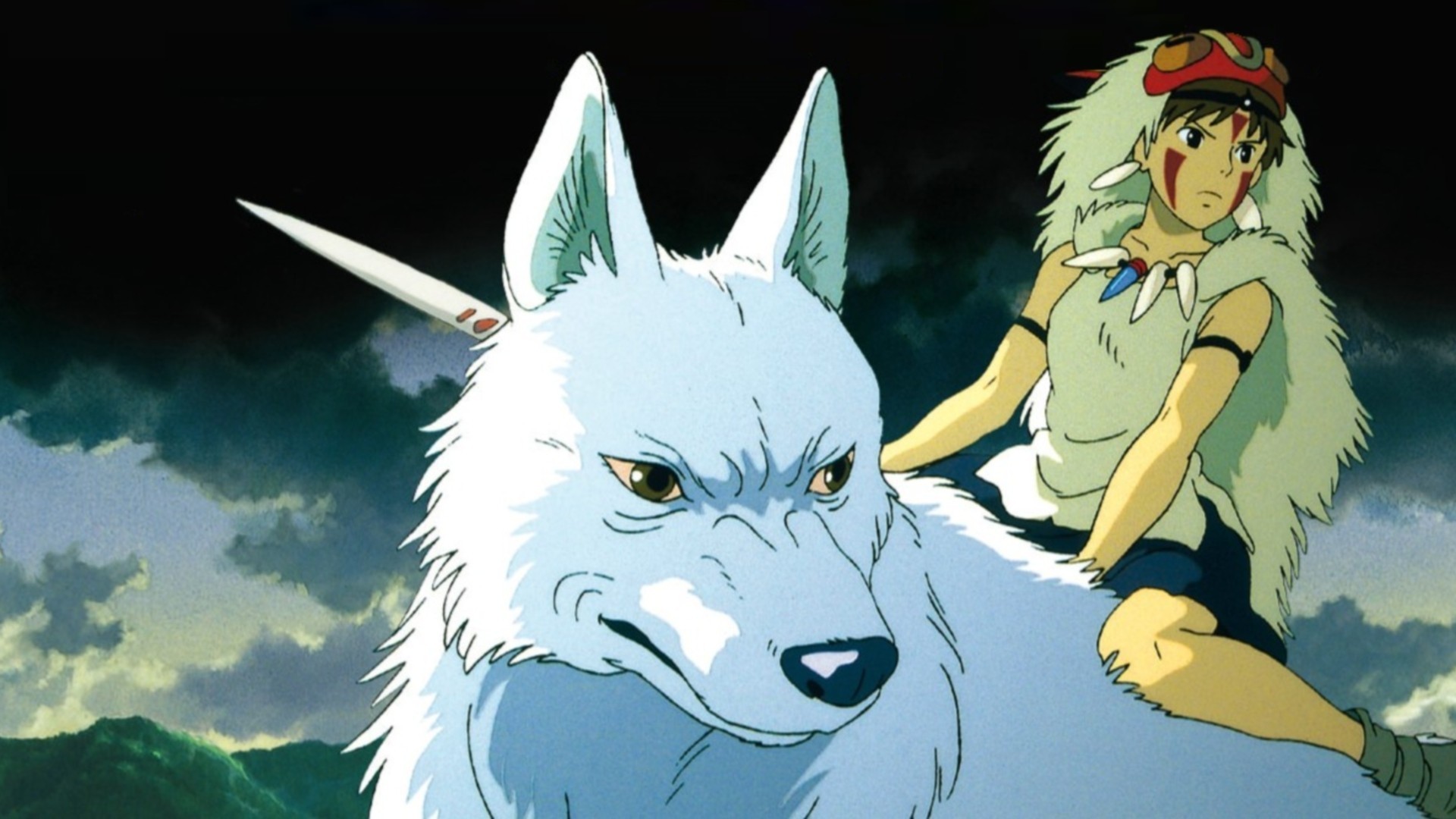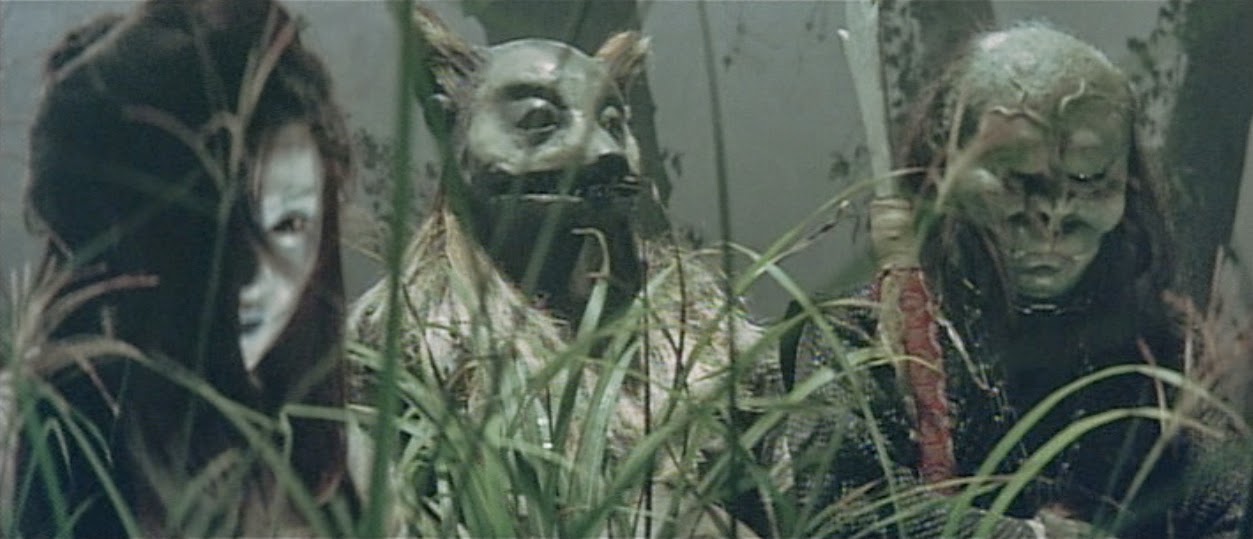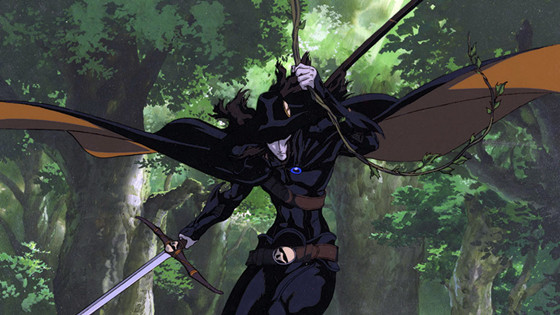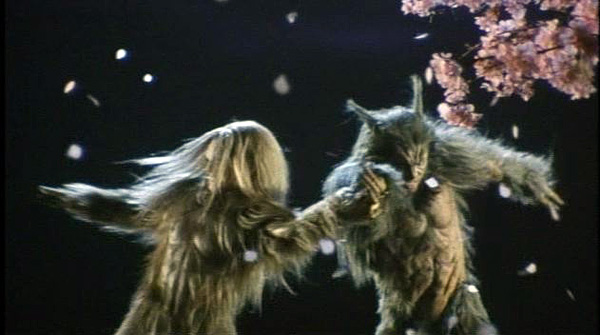In Japanese cinema, often one comes across films that are incredibly difficult to categorize. Are they science fiction? Horror? Comedy? All of the above? A lot of the time, when one encounters this fascinating area of Japanese cult films, the answer is yes. For the amateur cinephile and aficionado alike, it is exactly that hard-to-pin-down, out-of-the-ordinary quality that drew them to Asian cinema in the first place.
Unusual characters, risqué imagery and storylines, ambitious production goals and flat-out weirdness are what most often delineate this daring movie genre from conventional mainstream fare, granting many of the titles on this list the status of confirmed classics of the bizarre and extraordinary, while others are well on their way to being the cult classics of the future.
You’ll see here movies that are generally filed under “art films”, some that were meant as mindless, shallow entertainment, others that perfectly represent a particular period in the history of Japanese filmmaking, and still others that, in keeping with the theme of the article, don’t seem to fit any definition of what a movie is “supposed” to be.
15. Daimajin
Not as popular as the kaiju output of Toho Studios (or even fellow monster series Gamera from the same studios of the Daiei Motion Picture Company), Daimajin represents and intersection of the samurai, kaiju, and supernatural horror genres that had never before been attempted, and has never since returned to frighten villages of awestruck farmers and bring terrible wrath on the heads of heartless, corrupt officials.
After the untimely death of a local feudal lord, a scheming chamberlain takes over, forcing all of the men of a farming village into slavery. He persecutes the former lord’s surviving children when he learns of their existence and tries to destroy the statue of the deity Daimajin that rests half-buried in the side of a mountain.
Desperate, the lord’s daughter offers up her life in exchange for the deity’s help, bringing the statue to life, its face a frightful mask of samurai rage. Daimajin descends on the evil chamberlain and his men, killing them and nearly smashing the village before the young woman again intercedes.
The first installment of a trilogy (all three films follow the same basic formula), Daimajin is in many respects one of the best-looking, and sadly also one of the least well-known, kaiju films of the Sixties. Gorgeously shot and expertly crafted, it pushes the boundaries of miniature and photographic effects of the time, executing what are, hands down, among the most convincingly realistic and emotionally cathartic giant monster rampages in movie history.
As dramatically potent as it is beautiful to look at, Daimajin needs to be seen by every cult movie fanatic in search of the refreshingly unique. Thundering music Akira Ifukube, the same man who scored Godzilla’s first foray into Tokyo.
14. War of the Gargantuas
When a trawler is attacked by a giant octopus, a massive creature rises out of the ocean to fight it, sinking the ship in the process. He continues rampage with an assault on an airport—during which he eats a woman alive—and another on the city of Tokyo. He turns out to be a hairy humaniod called Gaira, similar in appearance to another creature studied by a research team some years earlier.
The scientists involved are convinced Gaira can’t be their creature, who was non-violent. When the military corners Gaira and comes close to killing him with laser cannons, the other, bigger creature, called Sanda, appears and whisks him away. It becomes clear to the scientists that the two monsters were born from the same mutated cells. After Sanda realizes that his brother is beyond redemption, they engage in a battle that takes them to the ocean, where they are both swallowed up by a suddenly active undersea volcano.
Made as a co-production between Toho Studios and the American film company UPA, War of the Gargantuas is a sequel to Frankenstein Vs. Baragon, known in the States as Frankenstein Conquers The World. The creatures are even called “Frankensteins” in the original language track, but are changed to “Gargantuas” for any version dubbed or subtitled in English.
The idea is that both monsters grew from cells collected from the severed hand of the colossal Frankenstein’s Monster from the first film, though it’s certainly not necessary to have seen that one to enjoy War of the Gargantuas—in fact, little effort is made in the English versions to make a connection with the previous film.
Directed by famed kaiju-master Ishiro Honda, Gargantuas has the sharp, highly detailed look of his other monster films from the Sixties and Seventies, perfectly capturing Eiji Tsuburaya’s incredible miniature work and monster costumes, which are made all the more amazing by the fact that they allow the audience to see the actor’s eyes, lending the story a greater sense of drama.
As in other American co-productions with Toho, an American actor appears along with the Japanese cast—Russ Tamblyn in this case, taking over from Nick Adams in the first film (Adams also appeared in Honda’s Invasion of Astro-Monster). Generally regarded as one of the finest and most original kaiju films, jam-packed with great action and stunning imagery.
13. Versus
A group of yakuza and an escaped prisoner run into each other outside a forest that reputedly contains a portal to another dimension. The prisoner rescues a girl from their clutches and takes off into the forest with her, followed by the gang. One inside, they engage in combat with the reanimated corpses of the gang’s buried rivals, and the prisoner finds himself in a one-man war against supernaturally-powered assassins. Realizing he is part of an historic conflict that has been going on for centuries, the prisoner attempts to keep the gang’s leader from opening the portal, using a combination of guns, swords, and his bare hands.
The first feature-length film from Ryuhei Kitamura (who would go on to direct, among other films, the last Japanese-produced Godzilla movie, Godzilla: Final Wars), Versus is one of a handful of success stories where an independent filmmaker goes all-in on a low-budget project and has it pay off in a major way. Legend has it that Kitamura thought this was the only full-length film he’d ever get to make, so he threw everything he loved about his favorite genre films into a blender and ended up with this dizzying puree comprised of yakuza films, zombies, John Woo, The Evil Dead, samurai films, and kung fu.
The movie seems calculated to escalate with each scene, building from casual gangster cool to bloody zombie shootouts and eventually exploding into tightly choreographed, wickedly performed knife-fighting and swordplay. The story even moves backward and forward in time, flashing back to the death of a samurai and into a future of deadly wastelands populated by Road Warrior cyberpunks, at which point Versus unveils a story-inverting twist ending that caps off the best low-budget indie project since the early work of Sam Raimi and George Romero.
12. Princess Mononoke
Hayao Miyazaki, along with Akira director Katsuhiro Otomo and Ghost In The Shell helmer Mamoru Oshii, is one of the filmmakers most responsible for pushing anime out of the ghetto of geek subculture and into the arena of international respectability afforded to “real” cinema.
His work states as firmly as any other that Japanese animation is as viable and as worthy of inclusion in the classical canon as the best work of Disney Studios. He accomplished this feat by telling stories that strike an almost elemental note of myth and enchantment, assembling out of the standard parts and pieces of mainstream anime visuals that one feels have never been seen before, a quality of experience that may never be replicated again.
The message of Miyazaki’s masterpiece is unmistakable: rampant human consumption of nature will eventually lead to death and destruction, and well as the despoilment of all that is beautiful in the world. Set in medieval Japan, the story follows Ashitaka, the prince of a primitive tribe who becomes infected by a dangerous substance that has overtaken the body of a boar god, turning it into a grotesque demon. He seeks out the domain of the Forest God, where he might find a cure for his affliction.
In doing so, he comes across Irontown, an establishment run by a woman named Lady Eboshi who is determined to do away with all of the gods of the forest so she can use its resources without interference. With the aid of a young girl raised by wolves (the Princess Mononoke of the title), the prince tries to put a stop to Eboshi’s plan to kill the Forest God and wage a war of genocide against the rest of the forest spirits. When the god is decapitated, the act unleashes a destructive force that threatens to annihilate the entire world.
Miyazaki’s parable is a detailed analogue of the modern world. Irontown employs former prostitutes and the diseased to assemble weapons for the war, suggesting the way in which industry often employs the desperate to further its production goals. Irontown itself symbolizes the worst aspects of human civilization, setting itself against the natural world to not only its own detriment but that of any living thing that gets in its way.
Toward the end, the human ambition to control nature through violence results in a catastrophe, a story element that can be applied to contemporary dangers such as climate change, meltdowns at nuclear power plants or possible earthquakes caused by hydraulic fracturing—any of them fit the theme of this visually breathtaking, one-of-a-kind film that can simply not be praised enough.
11. Yokai Monsters: Spook Warfare
As two grave robbers raid a tomb in the ruins of ancient Babylon, they awaken a powerful demon called Daimon, who flies to Japan to wreak havoc. Once there, he drinks the blood of a samurai magistrate and one of his underlings, possessing their bodies and demanding that the household shrines be destroyed. Daimon’s activities are noticed by a kappa living in the pond outside the house, who tries to fight the demon to no avail. His yokai friends provide little help, not believing his tale of a strange monster they’ve never heard of.
However, as the possessed magistrate sends his servant out to bring him children from nearby farms so he can subsist on their blood, two escaped youngsters implore the yokai to help. After several unsuccessful attempts to trounce the evil Daimon, they call on all the yokai of Japan to declare war on the interloper, fearing the reputation of Japanese supernatural beings will be forever tarnished if they can’t send him packing.
Part of a trilogy of films produced by Daiei Motion Picture Company from 1968 to 1969, Yokai Monsters: Spook Warfare is an almost perfect kids’ film, provided parents can overlook infrequent—and fairly minimal—bloodshed and mild cursing (the other condition would be kids that are good at reading subtitles or speak fluent Japanese).
The movie is fast-paced, fun and colorful, making use of dazzling—and, for the time, quite sophisticated—special effects, giving it the same level of production value found in the studio’s other fantasy trilogy of Daimajin films, and the kid-friendly feel of their Gamera series. Also a lot of fun for adults keen to learn something about Eastern folklore.
10. Vampire Hunter D
Out of the wild and woolly world of the 1980s comes this inspired exercise in animated sci-fi/horror. No CGI enhancement, no giant robots, just a harsh, fantastical dystopia of undead overlords and sinister demons. The vampire hunter named D, a direct descendant of Count Dracula, takes on a 10,000-year-old vampire who holds an entire region in his terrifying grip. Helping him fight the ancient bloodsucker and his minions are a scimitar-like longsword and the face on the palm of his hand that dispenses (often unwanted) advice and criticism and well as giving D an extra edge in healing from injuries.
Vampire Hunter D takes place very smartly not in a high-tech futuristic society but rather in a far-flung time that bears all the trappings of 19th-century Europe while also including science fiction elements such as laser rifles—a kind of steampunk by default, if you will. Like all great anime, it creates a world that is unique in its depiction of time and place, intermingling horror, science fiction, period drama, and fantasy, tailor-made for those who enjoy supernatural fiction with a touch of inventiveness and class. Based on a series of novels by Hideyuki Kikuchi.
9. Kibakichi
A ragged samurai named Kibakichi walks a lonely country road and finds himself confronted by sword-wielding ruffians. What follows is a fight that leads to cleanly severed limbs and high-pressure bloodspray. The warrior pushes on, coming to a village where the main business appears to be a gambling house run by yokai (Japanese demons from ancient folklore).
The yokai have made deal with a nearby feudal lord—they kill and eat criminals who stop in their village to gamble in exchange for peace. But Kibakichi knows better. His own village, populated by werewolves such as himself, was wiped out by humans who had promised to leave them alone. As the supernatural beings debate, the feudal lord’s henchman acquire guns and explosives from a Western power and plan to use them to wipe out the yokai for good.
If you take a bit of Lone Wolf and Cub, throw in a little of Joe Dante’s The Howling, and stir in some of the visual sensibility of Lucio Fulci, you’ll have something that strongly resembles Kibakichi, a sort of period horror anime presented in live action. After a strong start, it gets kind of dull in the second act, but stick with it: this is a movie that seems to have been made with the finale chiefly in mind.
The character Kibakichi transforms into a werewolf to fight the gun-toting samurai clan, leaping and flipping, dodging exploding grenades, going one-on-one with a yokai cyclops, and employing wolfman hand-to-hand combat. If the entire movie were like its last fifteen minutes, it would be a masterpiece. Taken for what it is, it’s an enjoyably cheesy, bloody supernatural romp with a killer ending.
